The Gymnosperms are with high economic importance to mankind. For easy understanding, the economic importance of Gymnosperms can be categorized in the following heads:
Economic Importance of Gymnosperms
- Food Value
- Medicinal Value
- Timber Value
- Source of Oil
- Industrial Value
- Ornamental Value
- Other Uses
(1). Food Value
Ø Cycads are a good source of Starch.
Learn more: Affinities of Gymnosperms
Ø ‘Sago’ is a starch obtained from the pith and cortex of the stem of Cycas revolute and Cycas rumphi.
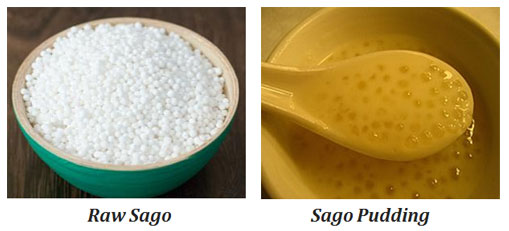
Ø ‘Seed starch’ is obtained from the seeds of Cycas rumphii and Dioon edule. It is prepared into flour and cooked before eating.
Ø Seeds of Pinus gerardiana are edible and are commonly known as chillgoza.
Ø ‘Kaffir bread’ is a type of bread prepared from the stem pith of Encephalartos.

Ø Young leaves of Cycas are cooked as vegetables in some parts of the world.
Ø The seeds are Gnetum is also edible.
(2). Medicinal Value
Ø Paclitaxel (PTX), an anticancer drug sold under the trade name ‘Taxol’ is an alkaloid extracted from the bark of Taxus bervifolia. Taxol is a spindle fibre inhibitor, which prevents the progression of cell division. It is used in the chemotherapy of ovarian cancer, breast cancer, lung cancer, cervical cancer and pancreatic cancer.
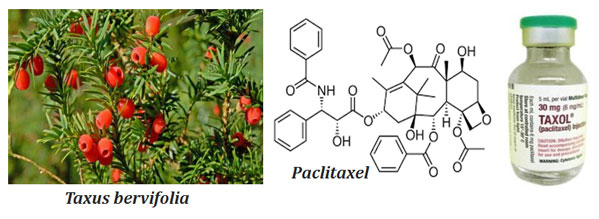
Ø Ephedrine, an alkaloid extracted from the Ephedra is used in the treatment of asthma, cough, cold, bronchitis etc. The decoction of Ephedra is a cardiac stimulant.
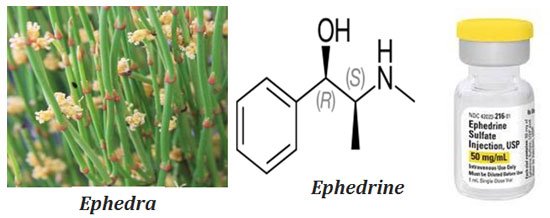
Ø Juice of the young leaves of Cycas revoluta is used for curing blood vomiting.
Ø Cycas-gum: an antidote against snake bite and it is also used against malignant ulcers.
(3). Timber Value
Ø Gymnosperms are a good source of Timbers. Gymnospermic woods are called Softwood. They are very useful in making furniture and for other construction purposes.
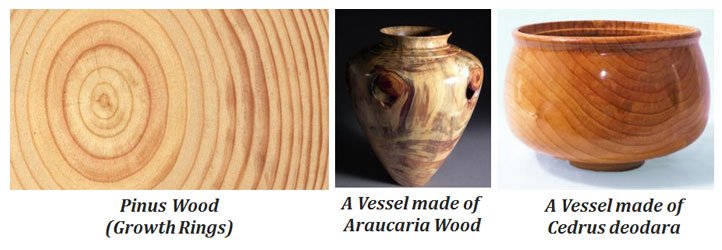
Ø Coniferous wood is resistant towards insects and fungus.
Ø These woods also have good durability and are of lightweight.
Ø Agathis australis is the largest timber producing tree in the world.
Ø Some gymnosperms produce scented woods such as Cedrus deodara.
Ø The wood of Pinus is used for making doors, poles, beams, railway wagon flooring etc.
Ø Plywood is prepared from the wood of Podocarpus.
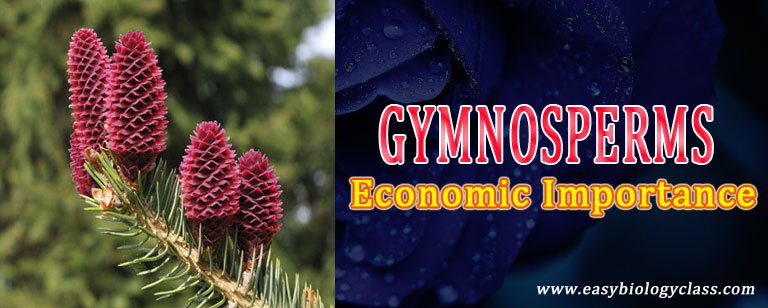
(4). Source of Oil
Ø Edible oil is extracted from the seeds of Cycas revoluta, Macrozamia riedlei, Pinus cembra and Cephalotaxus drupacea.
Ø Red cedar wood oil extracted from the heartwood of Juniperus virginiana is used in oil immersion microscopy.
Ø Oils obtained from Cedrus deodara, Ciyptomeria japonica and Cupressus sempervirens are used in preparations of perfumes and soaps.
(5). Industrial Value
Ø Tannins: Tannins extracted from the bark of Araucaria, Pinus and Sequoia are used in the leather industry.
Ø Canadabalsam is a resin obtained from Abies balsamea and used as a mounting medium in biological preparations. Canadabalsam have same refractive index as that of glass.
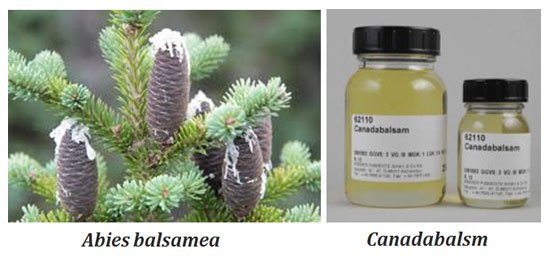
Ø Amber (fossil resin) is obtained from Pinus succinifera. It is used for making jewellery, pipes and cigar holders.
Ø Papers industry: Newspaper, writing and printing papers are prepared from the wood pulp of Pinus, Picea and Abies

Ø Gum-Cycas is used as adhesive.
Ø Leaves of cycads are used for preparing baskets, mats, hats, brooms etc.
Ø Fibres obtained from the leaves of Cycas and Macrozamia are used for stuffing pillows and cushions.
Ø The wood of Taxus is used for making Pencils.
Ø Pinus roxburghii produce oleorosins and gum-rosin which are brittle and aromatic solids used to manufacture soaps, varnishes and printing inks
| You may also like NOTES in... | ||
|---|---|---|
| BOTANY | BIOCHEMISTRY | MOL. BIOLOGY |
| ZOOLOGY | MICROBIOLOGY | BIOSTATISTICS |
| ECOLOGY | IMMUNOLOGY | BIOTECHNOLOGY |
| GENETICS | EMBRYOLOGY | PHYSIOLOGY |
| EVOLUTION | BIOPHYSICS | BIOINFORMATICS |
(6). Ornamental Value
Ø Many gymnosperms are grown as ornamental plants:
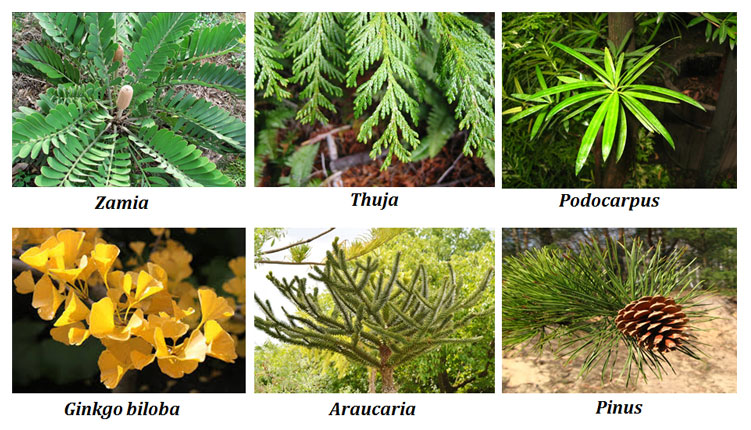 Ø Example:
Ø Example:
o Cycas: Leafy ornamental
o Zamia: leafy ornamental plant
o Araucaria: Avenue tree
o Thuja: Small shrub
o Podocarpus: Small tree
o Juniperus: small tree, as bonsai
o Pinus: avenue tree, as bonsai
o Ginkgo: Leafy ornamental, Sacred
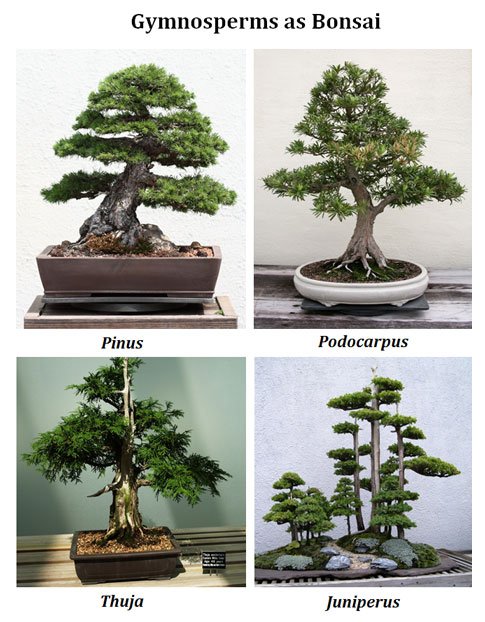
(7). Other Uses
Ø The strong root system of gymnosperm prevents soil erosion.
Ø Few gymnosperms are ‘Living Fossils’ (Cycas, Ginkgo) they provide important scientific knowledge about the past flora of earth.
Ø The bark of Gnetum gnemon and G. ula is used to obtain Fiber for making fishing nets and ropes
Ø Some Gymnosperms, particularly Conifers, are good sources of fuel-wood.
| You may also like... | ||
|---|---|---|
| NOTES | QUESTION BANK | COMPETITIVE EXAMS. |
| PPTs | UNIVERSITY EXAMS | DIFFERENCE BETWEEN.. |
| MCQs | PLUS ONE BIOLOGY | NEWS & JOBS |
| MOCK TESTS | PLUS TWO BIOLOGY | PRACTICAL |
You might also like…
@. Gymnosperm: General Characteristics
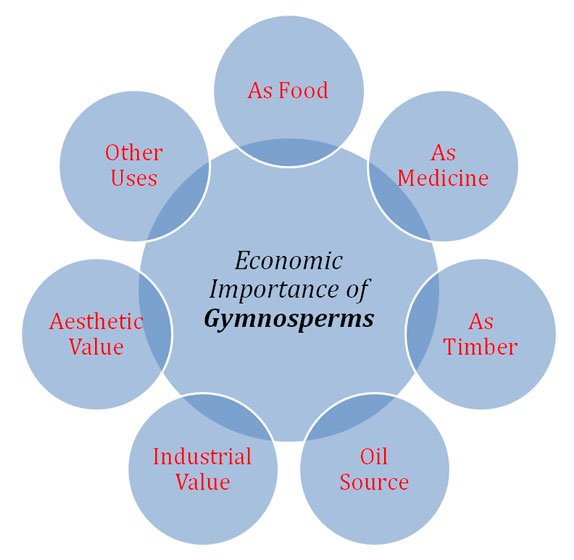
Thank you so much…. this was very useful
thank you Rhea, keep visiting easybiologyclass
Dear sir/Mam
How can I download PPT FROM YOUR Website , some PPT is not getting download
how to download economic importance of gymnosperm?
Sir this is very good and easy note’s
Thanks a lot
Best of luck
Unlike angiosperms why gymnosperm prefer to grow more only in temprate regions ? Why they choose xerophytic nature?
Sir,this is a long note. Prepare a short note. I need now.
Please write a Note of EMBRYOGENY OF GYMNOSPERMS